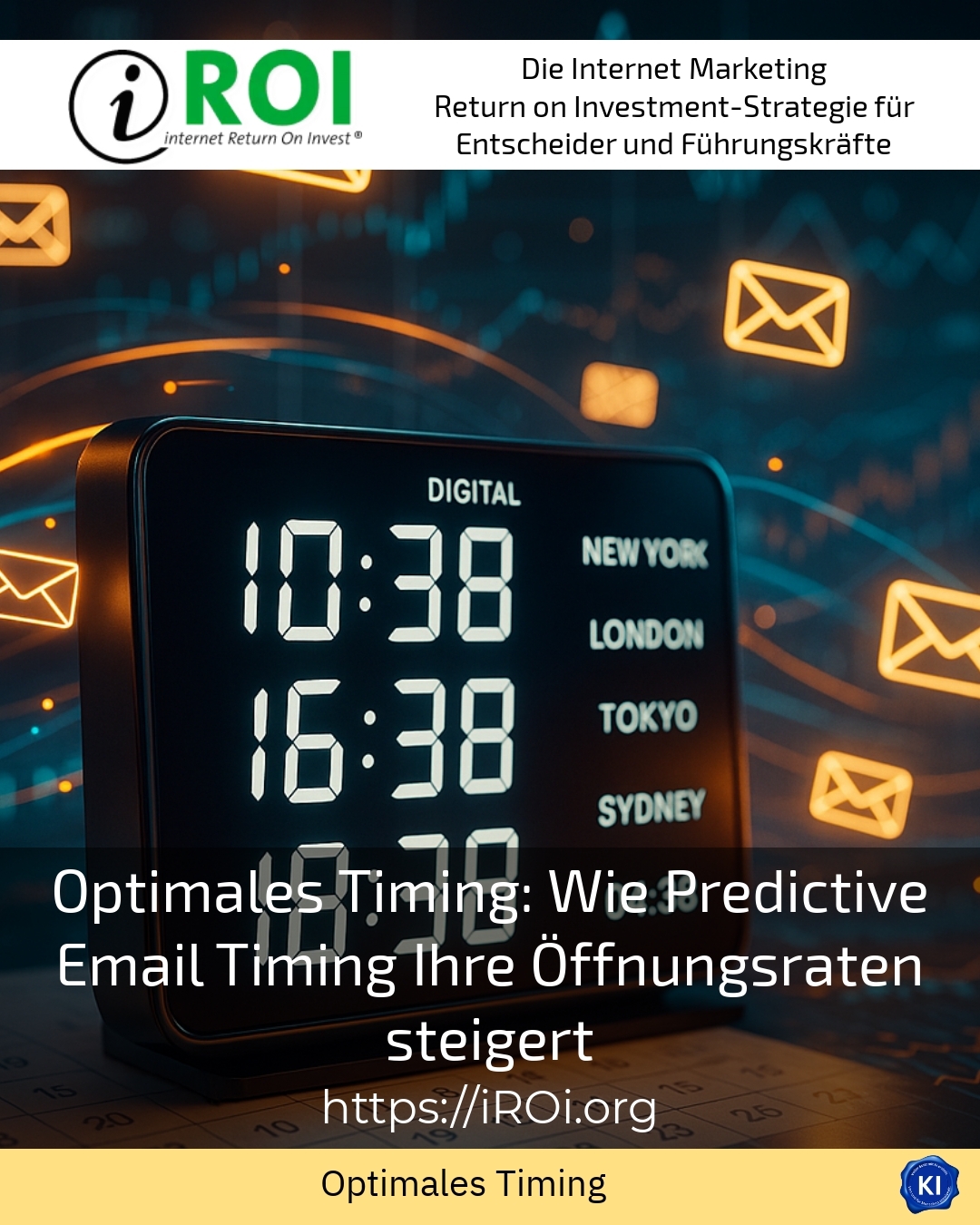In the field of digital communication, optimal timing often determines the success of a campaign. Many clients come to us because they formulate their messages carefully, but the desired effect does not materialise. They often report that their emails are sent but are barely opened or noticed. This is often due to the wrong timing. With the right optimal timing, open rates can be significantly increased and the impact of each message enhanced.
Why timing is so crucial
The inbox is a dynamic place. If you send too early or too late, you run the risk of the message getting lost. Most people check their emails at certain times of the day. If you know these patterns, you can target your messages. Optimum timing is therefore not a coincidence, but a strategic tool.
Example: A marketing agency always sends out its newsletter on Mondays at 8 am. The open rates remain low. After an analysis, they realise that their target group is only active from 10 am. They move the mailing to 10.30 a.m. and immediately see an increase in opening rates.
Another example: An online shop always sends out discount campaigns on Friday evenings. The click rate is low. After a survey, they learn that their customers are most active on Saturday mornings. They change the optimal timing and achieve more interactions.
A third example: An educational institute always sends out course announcements on Wednesday afternoons. The response is poor. After a test phase, they send them out on Tuesday mornings and see a significant increase in registrations.
Optimal timing: How predictive email timing works
Making data-based decisions
Predictive Email Timing uses data to determine the best time to send. The software analyses the recipient's behaviour and sends the message precisely when the likelihood of it being opened is highest.
Example: A software provider uses predictive email timing to send product updates. The software recognises that most customers open their emails on Tuesdays between 10 and 11 am. The updates are sent at this time and achieve a significantly higher open rate.
Another example: A fitness studio always sends training plans at different times. After the introduction of predictive email timing, the plans are sent to users individually. Participation in the training sessions increases noticeably.
A third example: A non-profit organisation uses predictive email timing for donation appeals. The software recognises that most donations are received at the weekend. The appeals are sent out specifically at these times and the willingness to donate increases.
Practical tips for optimum timing
Test different dispatch times and analyse the results. Use A/B tests to find out which time works best for your target group.
Example: A tour operator tests different dispatch times on Tuesdays and Thursdays. They realise that most bookings are received on Tuesdays at 10 am. They optimise their optimal timing and increase the booking rate.
Another example: A fashion shop always sends out new collections on Wednesday afternoons. After a test, they send them on Tuesdays in the morning and see a significant increase in the click rate.
A third example: A consulting firm always sends out case studies on Fridays. After a test, they send them out on Thursdays and achieve more interactions.
BEST PRACTICE with one customer (name hidden due to NDA contract) A medium-sized company from the B2B sector wanted to make its newsletter more effective. The open rates were below the industry average. We analysed user behaviour and introduced predictive email timing. The software recognised that the target group was most active on Tuesdays and Thursdays between 10 and 11 am. After the changeover, the open rate increased by 35 per cent. Customers reported more enquiries and higher brand awareness.
Optimal timing in everyday life: what clients report
Many clients come to us because they want to improve their communication. They report that they often have the feeling that their messages are not being noticed. With the right optimal timing, they can significantly increase their reach and impact.
Example: A law firm always sends out client information on Mondays. The feedback does not materialise. After switching to Wednesday mornings, they receive more responses and positive feedback.
Another example: A club always sends out event information on Fridays. Participation is low. After switching to Thursdays, participation increases significantly.
A third example: A pharmacy always sends out health tips on Saturdays. The opening rates are low. After switching to Sunday mornings, the open rate increases noticeably.
My analysis
Optimum timing is a decisive factor for the success of digital communication. Those who send their messages at the right time reach more recipients and increase their impact. Predictive email timing offers valuable support here. Targeted tests and data-based decisions can significantly increase open rates. iROI-Coaching supports projects relating to optimal timing and helps to make communication more effective.
Further links from the text above:
The best time to send an email
When is the best time to send emails?
The best sending times for emails
For more information and if you have any questions, please contact Contact us or read more blog posts on the topic internet Return on Investment - Marketing here.















